Blog
8 Different Types of Yorkies You Need To Know Right Now
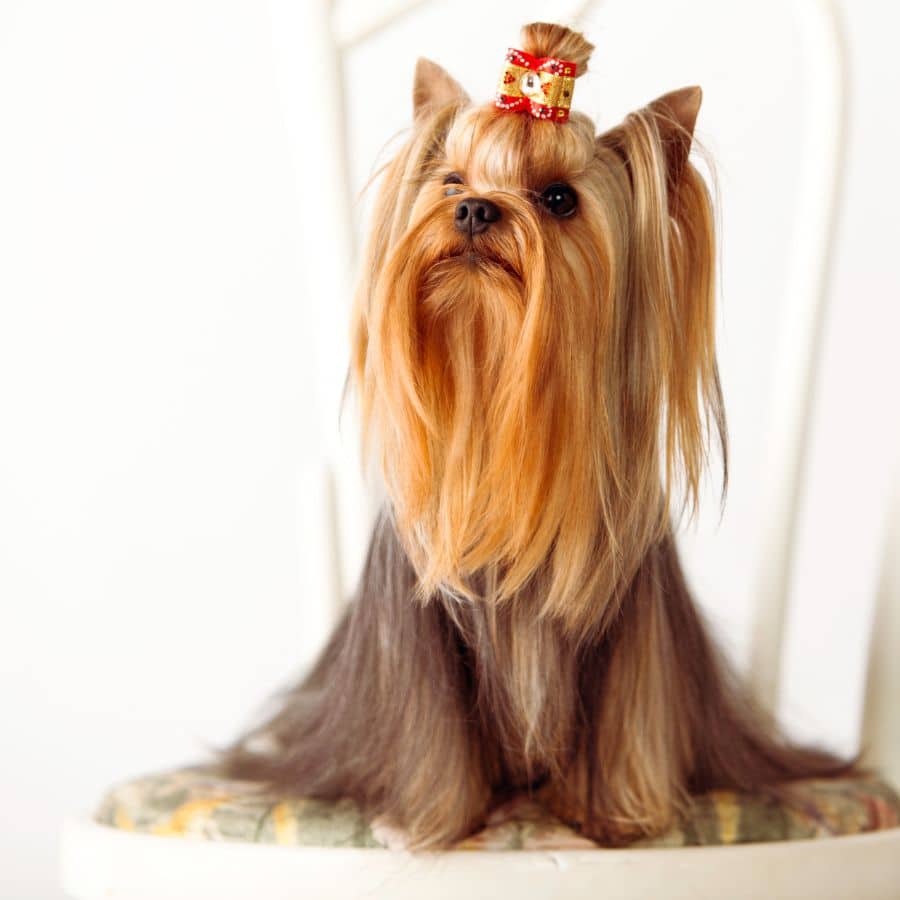
Dogs are different because of their color, coat, nose, legs, or eyes. While Yorkshire Terriers are the only official breed of Yorkies, there are different types of Yorkies that result from mixes with other dog breeds. In this article, we will cover eight different Yorkie variations.
What types of Yorkies do you have to know?
Biewer Yorkshire Terrier
The Biewer (“bee-vair”) Terrier is a breed that has its foundation in the Yorkshire Terrier. They originated in Germany on the 20th of January 1984 after 2 Yorkshire Terriers with recessive piebald genes were bred. They were raised for 20 years after they noticed that a completely new breed has been created with recessive piebald genes that they inherited from their parents. By the year 2012, they became one of the most popular breeds in the world. This breed is very energetic and super friendly. They love to explore around and meet other dogs. When it comes to training, they can be pretty stubborn, even though they are super intelligent by nature. Housebreaking can be pretty exhausting with this specific breed.
Biewer Terrier is the ideal pet for smaller apartments. Because they do not have digging and hunting issues, this makes this breed the perfect pet for houses with no garden or easy access to parks. Every dog breed has some health issues that are more common than others. Some of them include dental issues, skin irritation, diarrhea, or frequent soft or discolored stool. This should not change your mind about this lovable breed, because regular check-ups to the vet will avoid any severe health condition.
When it comes to taking care, you should pay more attention to their long coat. Germs can hide much easier in longer coats. Biewers are a super active breed and they love to go in bushes or lay on the grass. In order to keep them germ-free regular baths are recommended. Dirt and other allergens can get under their nails so as a responsible owner, you should trim them regularly with a nail clipper or any other grinder. This will avoid overgrowth and cracking, but also infections. Brushing teeth should also be done regularly.
Because of their nature, they are more exposed to dental issues. Biewers have a different diet from other dogs. It is based on food that helps them regain the energy that they lose from all the high energy consumption activities. They are more exposed to obesity because owners sometimes overfeed them. To avoid that, you should visit a professional vet that will prescribe a diet perfectly suited to your dog. Diet changes over time as they get older.
Biewers are much smaller than any other breed, so to avoid injuries you should always monitor your dog. Children can also be dangerous to this type of breed. As they get excited, injuries can happen much more often.
Rare Yorkie Colors
For those who appreciate unique colorations, rare Yorkie colors offer some truly eye-catching options that go beyond the standard black-and-tan. These variations bring a distinct flair to the breed, making each dog stand out in a special way. While these rare colors are admired by many, it’s important to note that they are not officially recognized by the American Kennel Club (AKC) due to strict breed standards that emphasize traditional coat patterns. Let’s explore some of these rare color variations and why they remain outside of the AKC’s guidelines.
1. Chocolate Yorkie
The Chocolate Yorkie is known for its stunning brown coat, which ranges from a light mocha shade to a deep chocolate hue. This rare color results from a recessive gene that affects the pigmentation, giving the Yorkie a warm, rich appearance. The chocolate color often extends to the nose and paw pads, which may also appear brown. While the Chocolate Yorkie’s unique coloring is captivating, it’s not recognized by the AKC because the breed standard specifies that the traditional Yorkie should have a steel-blue and tan coat. Despite this, Chocolate Yorkies remain popular among enthusiasts who appreciate their one-of-a-kind look.
2. Blue-born Yorkie
Blue-born Yorkies are born with a distinctive steel-blue coat, a trait that occurs due to a genetic mutation affecting the dog’s hair color. This mutation can cause the hair to appear blue-gray or even silvery, creating a striking contrast to the typical Yorkie colors. Though this variation is admired by some for its unusual appearance, the AKC does not recognize blue-born Yorkies because the breed standard requires Yorkies to have a specific pattern of blue and tan as they mature. Additionally, blue-born Yorkies may face certain health risks linked to the gene responsible for their unique coloration, such as skin sensitivities or hair thinning.
3. Golden Yorkie
The Golden Yorkie is another rare variation, boasting a coat that ranges from a light blonde to a deep golden shade. This coloration occurs when the Yorkie inherits genes that suppress the typical black pigmentation, resulting in a coat that is entirely gold or blonde. Golden Yorkies are often sought after for their glamorous and sunny appearance, which differs significantly from the standard black-and-tan coloring. However, the AKC does not recognize this color because it deviates from the traditional breed standard, which emphasizes a specific pattern of blue and tan for show-quality Yorkies.
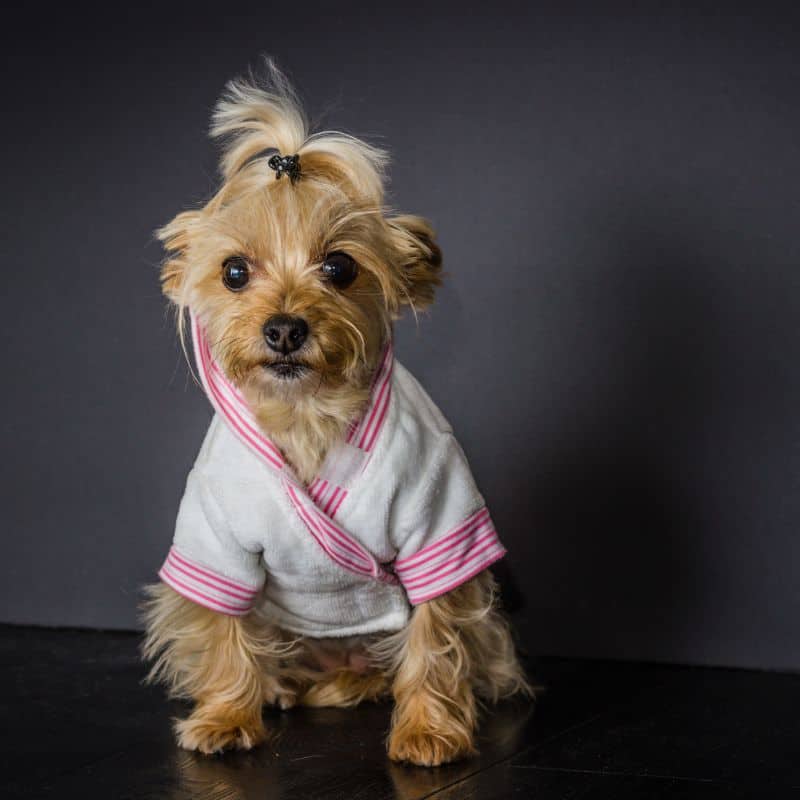
4. Merle Yorkie
Another rare but controversial color is the Merle Yorkie, which features a mottled coat with patches of lighter and darker shades, often accompanied by blue or multi-colored eyes. This color pattern occurs due to a specific gene that affects the distribution of pigment in the hair and skin. While some find the merle pattern attractive, the AKC does not recognize Merle Yorkies because the gene responsible for the merle coat can increase the risk of health issues, such as hearing loss and eye defects. Breeding merle-colored dogs is often discouraged to avoid passing on these potential health risks.
Why Aren’t These Types of Yorkies Recognized by the AKC?
The American Kennel Club maintains strict standards for the Yorkshire Terrier breed, which dictate that Yorkies must have a steel-blue and tan coat as they mature. These standards were established to preserve the breed’s original characteristics, and any deviation from the recognized pattern is considered a fault. The AKC’s primary focus is on maintaining the purity of the breed’s appearance and health, which is why non-standard colors like chocolate, blue-born, golden, and merle do not meet the official criteria.
Additionally, some rare color variations may be linked to genetic mutations that can increase the likelihood of health issues, such as skin conditions or hearing problems. By adhering to the traditional standards, the AKC aims to promote the healthiest breeding practices possible, minimizing the risk of passing on undesirable traits. However, while these colors are not AKC-approved, many owners and breeders still appreciate the beauty and uniqueness that rare-colored Yorkies bring to the table.
These rare Yorkie colors not only make the breed stand out but also come with unique care needs. Special grooming techniques and appropriate diet plans may be necessary to maintain the coat’s appearance and overall health. If you’re looking for a Yorkie that truly stands out from the crowd, exploring these rare colors can be a rewarding experience.
Parti Yorkies: AKC-Recognized Types of Yorkies
Parti Yorkies are purebred types of Yorkies. They were introduced to North America in 1872 when they became a legitimate Yorkshire Terrier variant. Back in the days, they were considered low-quality animals, and because of that, some breeders even put them down or secretly gave them away. In the 80s, one breeder named Gloria Lipman refused to put down her Parti Yorkies simply because of their totally different colors. She put all her effort to find them loving homes where they would feel safe and loved.
Many other breeders followed her steps, and in the year 2000, Parti Yorkie was recognized as the official breed. Breeding Parti Yorkie can be hard, because of their recessive gene. Because of this, Parti Yorkies are nowadays really hard to find and afford. These cute and colorful puppies are super energetic and affectionate to owners. Because of their energetic nature, they love to sleep all day. If you decide to own this dog breed, you will get one furry baby that will never leave your side. They love to get cuddles and crave affection. If you live a busy life and have no time for your dog, you should start introducing your puppy to other dogs. This way he will not get so attached to you. They are super hard to housebreak because of how stubborn they are. This is very common among Yorkshire Terriers overall.
Their life expectancy is between 12 and 15 years, similar to traditional Yorkie. In order to have a good life, your Parti Yorkie should eat high protein and fiber food. There are many diets that are recommended for this breed, but we recommend you to pay a visit to a professional vet who will then prescribe the right diet. Parti Yorkies suffer from an eye disorder.
In order to be sure that your dog won’t have this problem, you should always confirm whether the previous owner (if you are adopting or buying) has an updated certificate from a veterinary ophthalmologist clearing it of PRA. When it comes to taking care of your dog, regular showering and teeth brushing are recommended.
This way you will avoid skin infections and irritations, and dental issues. Parti Yorkies’ hair grows really fast, which can sometimes lead to poor visibility because of overgrown hair that gets in their eyes. Regular trimming will not only prevent poor visibility but also skin irritations. Germs love long hair!
Teacup Yorkie– one of the most popular types of Yorkies
Teacup Yorkies are miniature versions of Yorkshire Terriers. They got this funny name because of how small they are. Many Teacup Yorkies can fit inside of a teacup because of their size. On the other hand, even though they are super cute and adorable, because of their miniature size, they have a lot of health issues. Some of the most common are heart problems, brain issues, and low blood sugar levels. Bone problems can also occur because of underdevelopment. Their little hearts are more prone to defects compared to larger dogs. Their life expectancy is shorter than other Yorkshire Terriers. It ranges from 7 to 9 years.
To give them the life they deserve, you should pay extra attention to their everyday care. You should always carry them when climbing stairs because their bones are super fragile. Housebreaking can also be very difficult but that problem is present in every Yorkshire Terrier breed. This all should not frighten you because if you give them the love and care they deserve, and regular vet visits, many issues can be resolved. Unfortunately, when you are buying from a breeder prices can be very high. This is because of high demand and because they are very hard to breed. Pregnancy failures are very common and sometimes deadly for dogs.
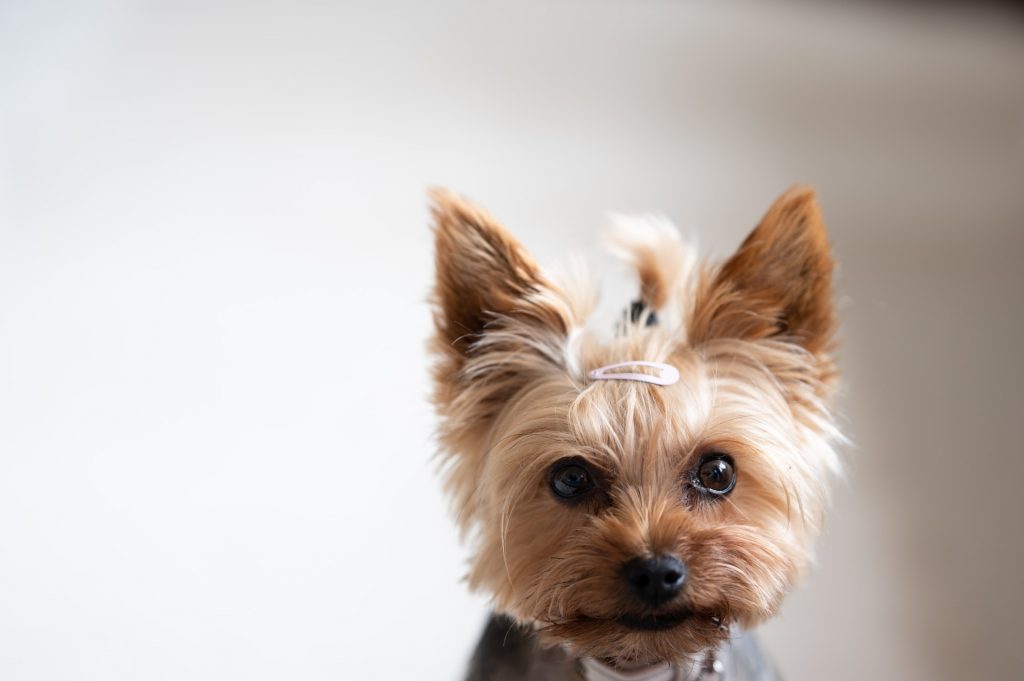
Teddy Bear Yorkie
Teddy Bear Yorkies are not officially recognized types of Yorkies, but they are different from regular Yorkshire Terriers. Their heads are shaped a bit differently from regular Yorkies. Their eyes, nose, and mouth are heart-shaped which makes them outstand from the regular Yorkshire Terrier breed. Their coats are usually tan and black. They may come in other color combinations, but this is more common. Also, their coat texture is much more different from regular Yorkies. It is similar to a sheep coat, also called a wooly coat, which does not grow too long. Their life expectancy is similar to Teacup Yorkies. Their bones are also very fragile, so you should need to pay extra attention. They also have heart and teeth issues. Regular brushing will avoid dental issues. But when it comes to digestive problems, a strong diet should be prescribed by a professional veterinarian.
Mismarked Yorkies
Mismarked Yorkies are Yorkies that come in colors other than black and gold, blue and gold, black and tan. or blue and tan. Any other color combination doesn’t meet the breed standards. These dogs may have unique colors, but they are still full-blooded Yorkies. Mismarked Yorkies are not recognized by the American Kennel Club (AKC) for showing. They don’t meet the strict appearance guidelines. But they make great pets for those who like the variety of Yorkies beyond the traditional look.
Health wise Mismarked Yorkies are the same as standard Yorkies. They can have heart and bone problems, dental issues and patellar luxation (a knee condition). Like all Yorkies they can have hereditary issues so regular vet checks are important to keep them healthy.
When it comes to training especially housebreaking Mismarked Yorkies can be very stubborn like their standard coloured counterparts. To avoid behavioural issues start training early. With patience and consistency they can overcome their stubbornness and be good companions.
By choosing a Mismarked Yorkie, you’re embracing one of the less traditional yet equally lovable types of Yorkies. They may not meet the breed standard colours but they have the same loving and lively personality that makes Yorkies so lovable.
Black Yorkies
Black Yorkies are very rare among Yorkshire Terriers. They have only one color of their coat which is black. Yorkies usually have a black and tan or black and gold coat. Sometimes, they will have one color coat for the rest of their lives, which is not always the case. When they reach six months, their coat starts to change from black to color combinations that are common for Yorkies. On the other hand, they are not much different from regular Yorkshire Terriers. They all have the same health problems, attitudes, and stubbornness.
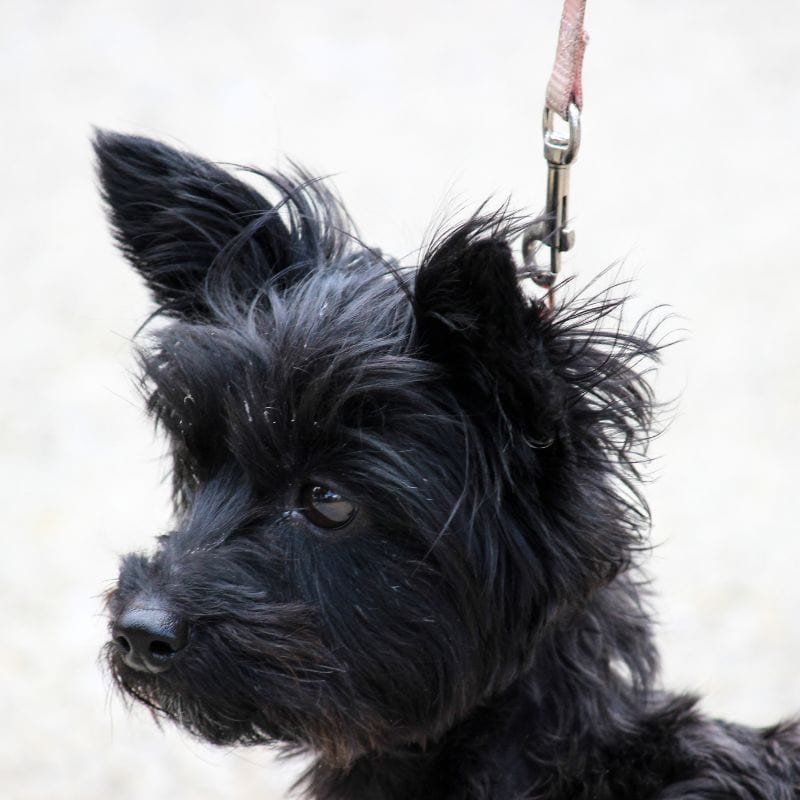
Designer Yorkies– Types of Yorkies That Will Steal Your Heart
Designer Yorkies are mixed breeds. They are different from other regular Yorkshire Terriers because of their parents. Often when Yorkshire Terrier is being mixed with other breed dogs for example Chihuahua, a Designer Yorkie will inherit for example their coat type, or color, or even nose and cheeks. This way they will be much more different than any other regular Yorkshire Terrier. In addition, this mixing will affect Designer Yorkies life span. They will share some common health issues, such as fragile bones, or heart issues. This is all because of their miniature size which greatly affects their health. Despite all of this, they are super cute, and adorable. They will love you with all of their heart no matter what. Because of this, they are one of the best dog breeds in the world.
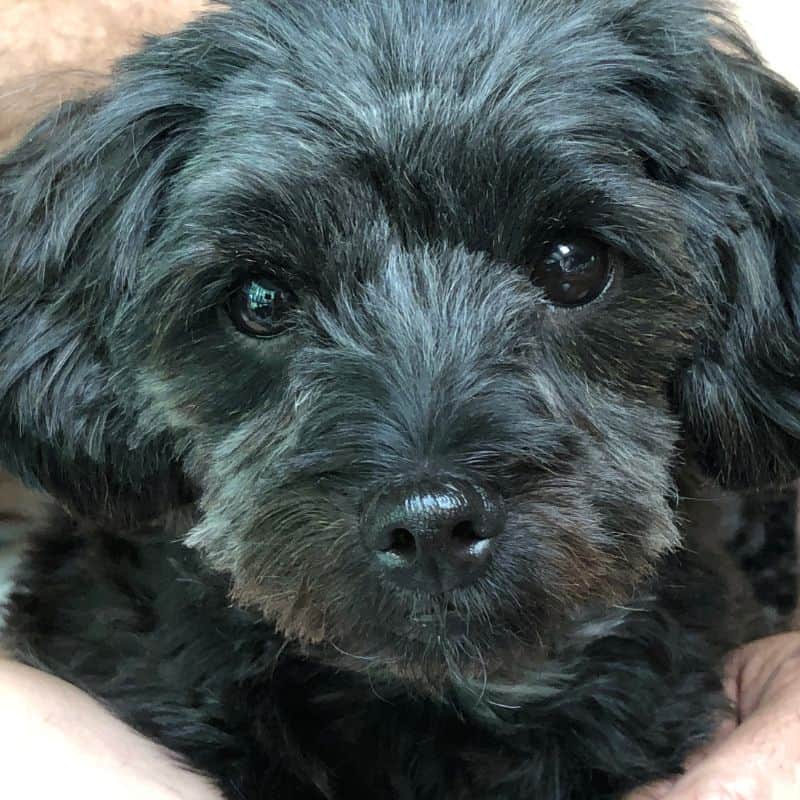
How to Choose the Right Yorkie for You?
We can’t deny that Yorkies are the cutest dog breed in the world. Although we listed these common types of yorkies, we’re sure you’d want to have all of them. But when it comes to choosing the right Yorkie for you, you have to understand the unique traits of each. While the Yorkshire Terrier is the official breed standard, there are several variations to choose from.
The Traditional Yorkie is the classic choice, with the black-and-tan coat that everyone recognizes. If you want something different, the Parti Yorkie has a tri-color coat that’s a nice twist. If you want a tiny companion, the Teacup Yorkie is cute but comes with extra health issues.
Other variations include the Biewer Terrier, known for its striking white, black, and tan fur, and the Chocolate Yorkie, which has a rare brown coat thanks to a recessive gene. Blue-born Yorkies sport a steel-blue hue, while Golden Yorkies stand out with their beautiful gold or blonde coloring.
Types of Yorkies: Conclusion
Yorkshire Terriers are super cute and fluffy dogs that can be ideal for smaller apartments. On the other hand, all of them have some sort of health issue. They are more exposed to germs and other allergens because of their coat type. Regular brushing and trimming are recommended. They come in many different types, which we covered in this article. Some of them have more health issues than others, because of their size and breeding nature. It all depends on how they were bred, which can sometimes be a problem. If they were bred in an uncontrolled environment, they can be more exposed to diseases. Despite all of this, Yorkies are one of the best owners’ partners. They will love you unconditionally. We hope that this article was useful and that you learned something new about this beautiful breed called Yorkshire Terrier, and its types.

One thought on “8 Different Types of Yorkies You Need To Know Right Now”